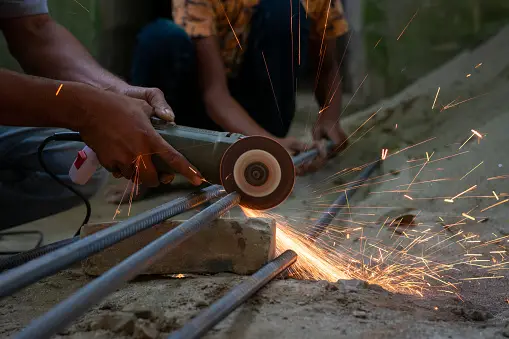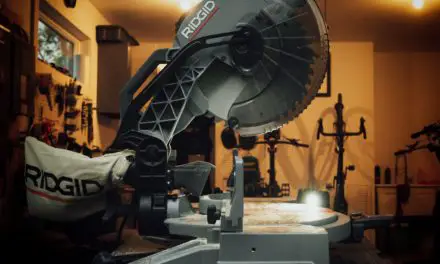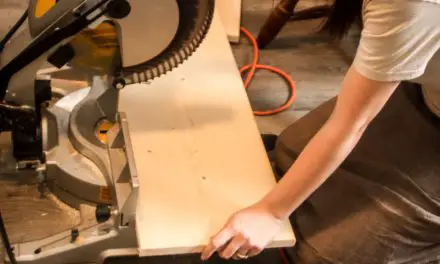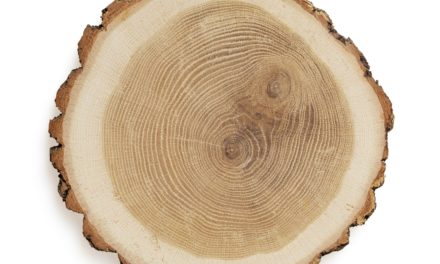Railroad ties are a beautiful addition to many styles and their study strong makeup allows use for many different projects. But these ties are large and heavy and many people don’t use the entire length of these ties.
Railroad ties can be cut with a circular saw. The saw should have a new, clean, and sharp blade to ensure the best cut. Be prepared to work slowly as these ties are extremely tough.
Are there better circular saws or blades that could make work easier? It’s possible, keep reading to learn more!
Types Of Circular Saws That Can Cut Railroad Ties
Circular saws come in two main design types. Choosing the right type of circular saw is imperative to make cutting the thick ties easier.
Worm Drive Circular Saw
A worm drive circular saw has a slightly heavier-duty motor with more torque making it better for heavy-duty jobs like hardwood. This is the type of saw recommended for cutting railroad ties.
Sidewinder Circular Saw
A sidewinder saw is also known as the traditional circular saw, these saw generally cost less because they are designed more for basic cutting jobs.
It is possible to cut railroad ties with this type of saw but it will be more difficult and take a lot longer.
Types of Circular Saw Blades for Cutting Railroad Ties
The blades for a circular come in many different types and can be daunting for those unsure of what they need.
General Purpose Blades
These are the most common types of blades and are a good choice for a variety of jobs. Because they are designed for multiple job types it is possible to cut through the ties with this style of blade.
Crosscutting Blades
Crosscutting blades are designed with more teeth than a ripping blade and are designed to work across the grain of the wood. These blades cut more slowly than other blades but produce a smoother cleaner cut.
Ripping Blades
A ripping blade has around 14 to 24 teeth and is designed to make quick fast cuts with rough edges, these blades are designed to cut with the grain of the wood.
Choosing a good sharp blade will make cutting through those tough ties quicker and easier.
Which Saw Is Recommended to Cut a Railroad Tie?
Railroad ties have many uses other than on a railroad. If you have some that you want to repurpose for other things but need to cut you’ll be looking for the best way to do so.
Cutting these strong ties can be a daunting task but it can be accomplished with one of two recommended options:
- A circular saw
- A chainsaw
Now, let’s take a look at how to cut railroad ties with a circular saw below.
How to Cut Railroad Ties with a Circular Saw
Some railroad ties may be coated with chemicals that can be harmful to your lungs so you should exercise caution and wear glasses and a mask when cutting or drilling into them.
Follow these steps to cut your railroad ties safely:
- First, elevate your ties with scrap pieces of wood. Having the ties slightly off the ground will make cutting through them quick and easy.
- Set the blade to its maximum depth, you will have to loosen the mechanism to change the blade depth. If you are unsure how to do this with your saw, refer to the owner’s manual.
- Begin cutting the top portion of your railroad tie, cut across the entire tie going as deep as your blade will allow. The tie will be difficult to cut so work slowly and take your time.
- Flip the tie over to the bottom side and repeat the above step, it’s okay if the cut doesn’t go all the way through, but go as deep as the blade will allow.
- Flip the tie over again to one of the uncut sides and follow the above steps to cut both uncut sides, you will need help flipping over the ties if they are full size.
- After you have cut all 4 sides, if your tie does not come apart or your cuts have not lined up perfectly, stomp on the cut wearing a heavy-duty work boot to break the last bit apart.
Make sure you’re following safety guidelines when doing this. Take a look below at some safety tips.
Safety While Working with Circular Saw
When working with a saw it is important to follow safety measures to ensure no one gets hurt. Using caution while using saws can avoid deep cuts, broken bones, and amputations.
Follow these tips:
- Always read the safety manuals of new tools and never disable the safety guards
- When starting or stopping the saw make sure the wood is not touching the blade
- NEVER take your eyes off the saw or the wood when the blade is running
- Be sure to set the correct depth and blade for your project
- Let the blade reach full speed before coming into contact with the wood
- Tightly hold the saw and the wood to prevent shifting or dropping
- Do not wear baggy or loose clothing as these things may get caught in the blade
- Sharp blades are better than dull blades and cause less kickback and splintering
Following these tips will help ensure you and those around you won’t get hurt.
Conclusion
Circular saws will not make quick work of these strong ties but it is possible to cut through them with a circular saw.
Use extreme caution when working with these ties and be sure to have an extra set of hands to help move them around!





